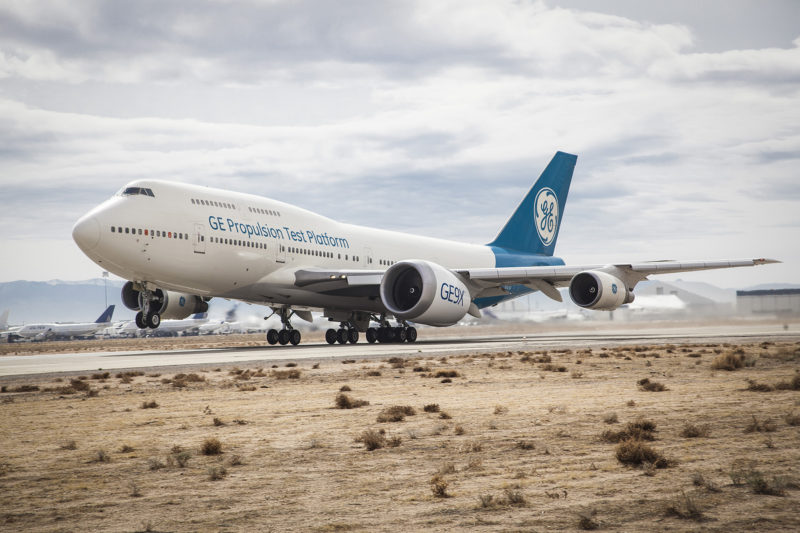According to sources in contact with Reuters, Boeing aims to perform the maiden flight of the 777X towards the end of June.
Although the timing is later than hoped, Boeing still remains confident the aircraft will push through the flight test campaign on time, with first delivery still on track for 2020.
Two flight test aircraft have now being built and painted and are currently on the ground undergoing stationary ground preparation. The most recent milestone was the first engine power up on frame for N779XW,.
777-9 INITIAL ENGINE RUN!! She’s ALIVE!!!! N779XW had her first engine run today producing smoke – and excitement from those watching 👍👏😍. #b7779 #boeing7779 #777x #b777x #boeing777x #n779xw #boeing pic.twitter.com/FskLnvYol9
— Katie Bailey (@KPAE_Spotter) 29 May 2019
General Electric is the exclusive engine provider for the 777X, with the GE9X powering both the 777-8 and 777-9. Although producing less thrust than the GE90, the engine is significantly larger, as seen in this diagram by The Air Current (Jon Ostrower):

| Engine | Thrust (lbf) | Bypass Ratio | Fan Diameter (cm/in) |
| GE9X-105B1A | 105,000 | 10:1 | 340cm/134 in |
| GE90-115B | 115,540 | 9:1 | 330cm/128 in |

Reuters notes progress on the 777X has been hindered by a partial U.S government shutdown and delays on composite wings. General Electric was also struck with some minor bad luck, identifying a small design flaw within the engine.
During ground tests that saw the engine fan and core at max speed with maximum exhaust gas temperatures, GE noticed a problem with the lever arms that control the variable stator vanes (VSVs), which modulate airflow through the compressor sections.
Being an external component to the compressor, GE was able to redesign the component with only a small delay to the engine program.
Airborne testing on their 747 test aircraft has proven successful and GE are confident the engine will perform well on the 777X.

Ongoing 737 MAX woes haven’t helped either, with Boeing having to transfer 777X engineers to the 737 MAX program in order to keep their cash maker alive and operable in the future.
With the ability to carry up to 425 passengers, the 777X is Boeing’s best shot at capturing the very large aircraft (VLA) market, which the A380 currently dominates despite it small collection of orders.
Since Airbus has announced production of the A380 will conclude in 2021, Boeing aims to secure any future VLA potential with the 777X.
On the other side of the spectrum, Airbus remains in a positive attitude about their A350-1000 which is a comparable aircraft to the current twin engine, heaving hauling leader, the 777-300ER.
During Airbus’ 2019 Innovation Days, the company noted at takeoff, the A350 is 45t lighter than the 777X. Despite this, Boeing has secured orders and commitments for 344 aircraft.
The Paris Air Show commences on the 17th of June and will conclude on the 23rd, making it unlikely Boeing will show off their 777-9 flight test aircraft.

Whether the aircraft does perform its flight in June or it gets pushed into July, the timing comes awfully close to the maiden flight of the original Boeing 777, which took to the skies on the 12th of June, 1994.
25 years since its maiden flight, the 777 has become the workhorse of global aviation, hauling passengers and freight around the world in a reliable and comfortable manner.
Boeing hopes the 777X will carry on the reputation of the previous 777 iterations and set a new standard for air travel with a new interior and its iconic folding wingtips.

Are you looking forward to the maiden flight of the 777-9?




